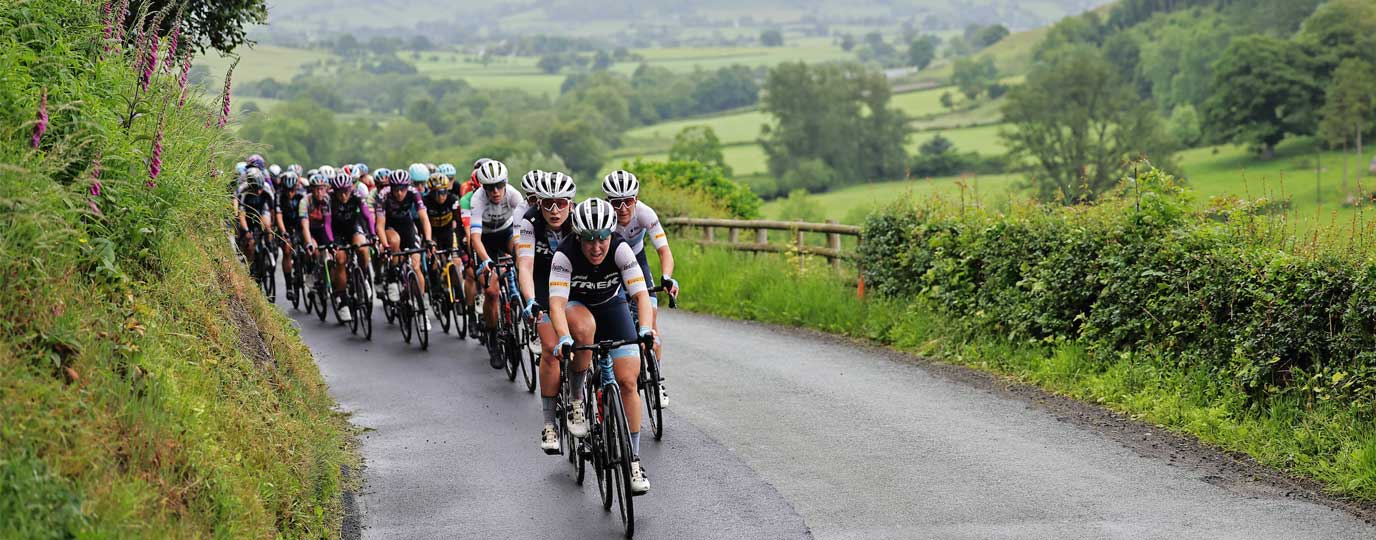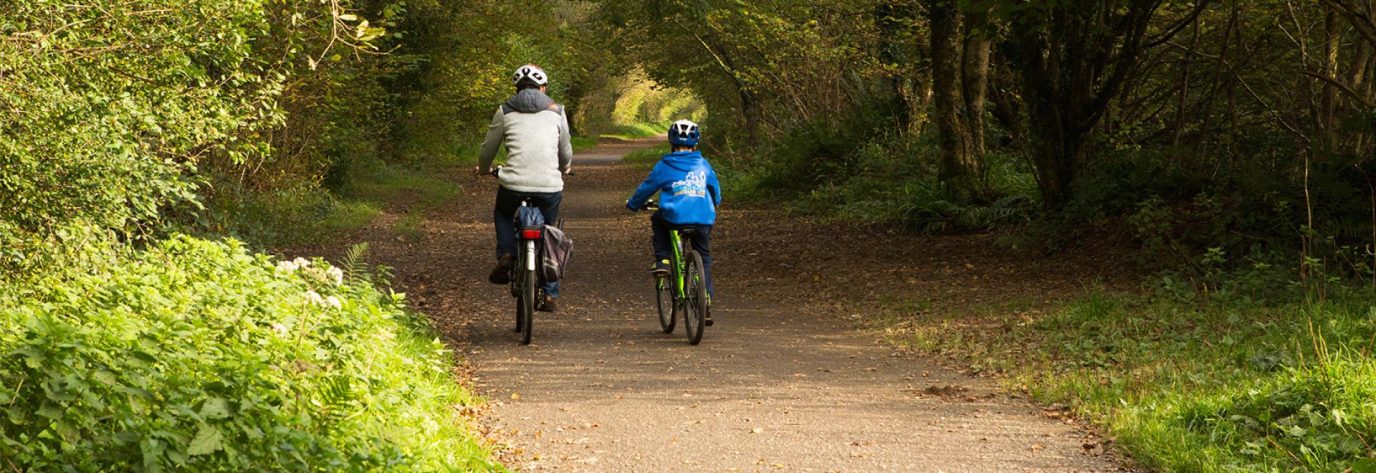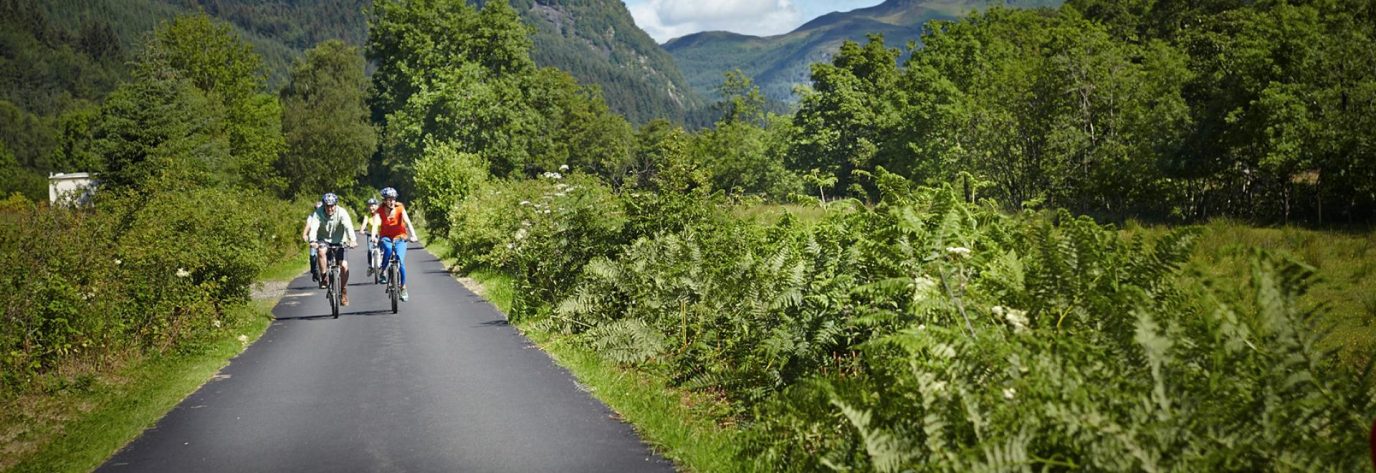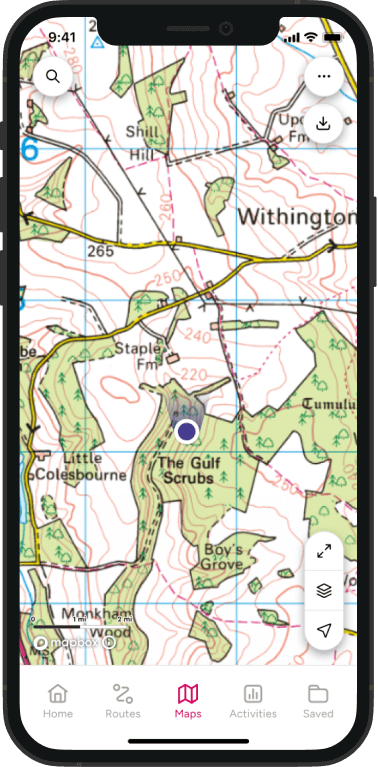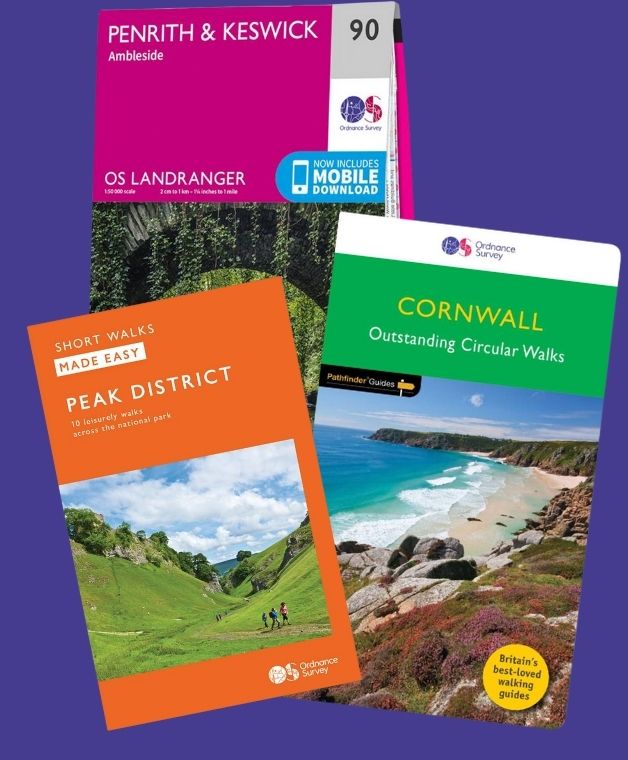Riding in winter
Winter can be a challenge to get out on two wheels, especially if you have a new bike or are new to cycling. Helen Pollard gives us her top tips to keep your wheels turning in this guide to cycling in winter.
Although we’d admit that it’s hard to beat cycling around in the summer with short-sleeves and no waterproofs, there’s still a lot of enjoyment to be had from winter cycling – let alone the benefits of keeping your legs turning, and lots of fresh air.
Cycling is a great way to spend time with friends and family. If you have kids, it’s a good idea to allow them to have a practice on a new bike before setting off on a longer ride, especially if they are getting to grips with gears for the first time.
Bike five step set-up
Before you head out on any rides you need to make sure your bike is set-up correctly.
If you have purchased your bike at an independent bike shop, they should have done this for you. With an internet purchase you will have to do a bit of DIY, but this shouldn’t be that difficult. Once your bike is all in one piece, follow the five steps below…
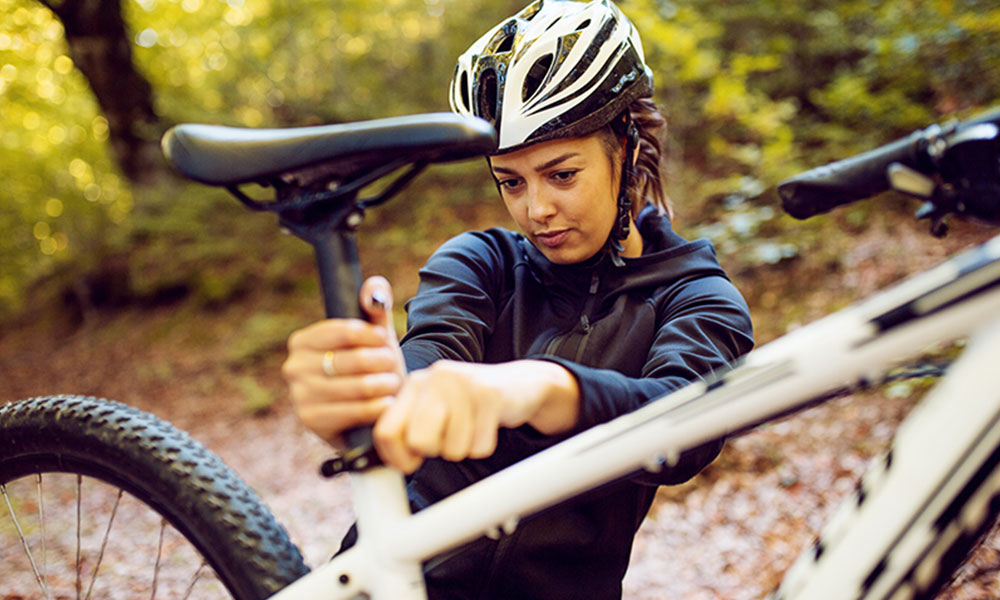
- Get the saddle height correct. Put the ball of your foot on the pedal at its lowest point without stretching. Your leg should be straight.
- Adjusting the handlebar height. A good position to start is with your handlebars at the same height as your saddle. Make sure brakes are within easy reach.
- The right tyre pressure. Recommendations are often found on the tyre or give it a squeeze it should NOT feel like a squishy banana.
- Tighten. Ensure everything that SHOULD NOT move is tight e.g saddle.
- Moving. Check that parts that SHOULD move such as gears do so smoothly.
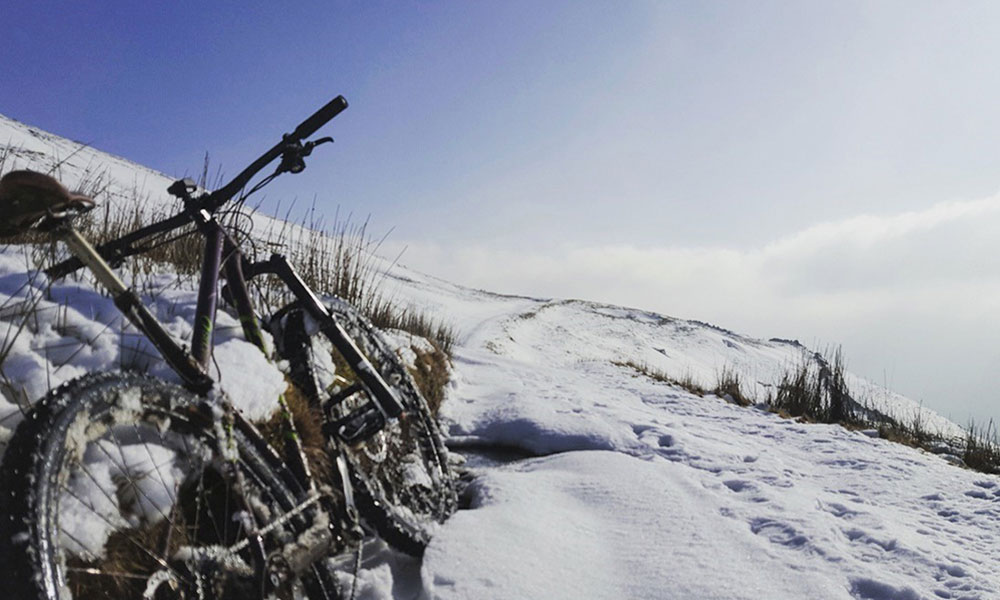
What to take cycling in winter
Winter cycling clothing
The most important factor in winter weather riding is, of course, clothing. This is essential when riding with children who are less able to regulate their body temperature and cold hands will take the enjoyment out of a ride very quickly – even for adults!
- Layers will help you manage changes in temperature during the ride. Include leggings worn over shorts and thermal base layers (merino wool has natural antibacterial properties). Lots of layers will allow you to strip down when you get hot and put on more clothes when you stop for a break.
- Cycle-specific clothing; other sports clothing may not have the correct fit in a riding position, or the correct properties to keep you moisture-free. Parents don’t be tempted to dress children in thick fleeces they will sweat and ultimately get cold. If you’re planning longer rides you may wish to invest in padded shorts or leggings for added comfort in the saddle. These can be picked up fairly cheaply from outdoor stores like Decathlon.
- Gloves; good quality properly fitted winter/windproof gloves. Remember too tight and fingers can get cold. It’s always best to go a size bigger in cycling gloves.
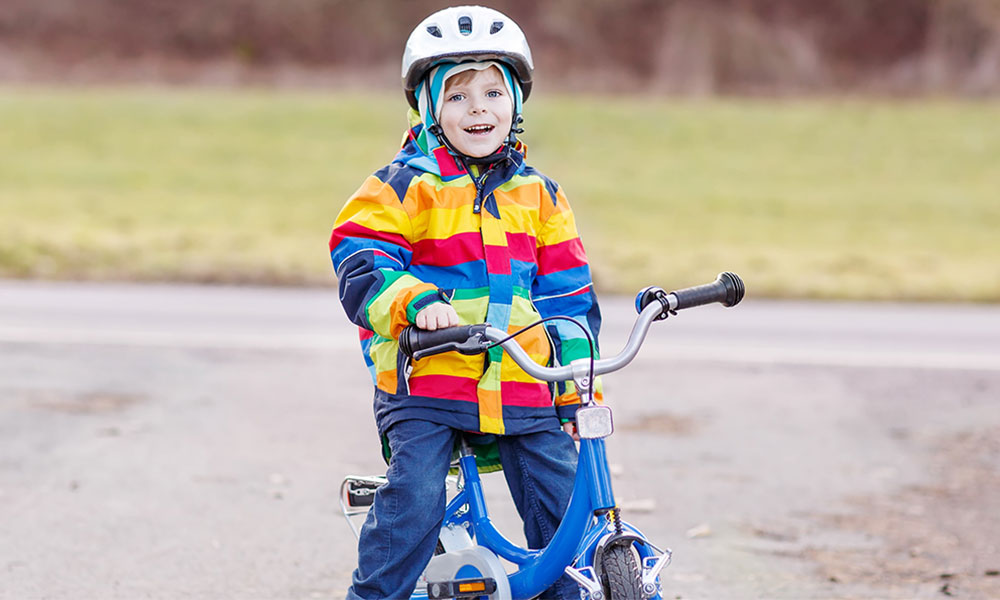
- Feet; overshoes are ideal for commuting cyclists or neoprene waterproof socks are another option and come in children sizes. Remember walking boots are great for walking but not flexible enough for cycling and will cause cold feet! Double up on the socks and choose trainers over casual shoes and boots.
- Head; a tubed scarf is essential kit and can be used in many ways include over the head under the helmet to prevent drafts. We’re a big fan of Buffs!
- Eyes; clear or lightly tinted glasses are a good idea to keep spray and grit out of your eyes. Glasses are handy but not essential.
Not sure whether you have enough clothes on (or too many)? Then go outside before your ride and see how it feels. You should not feel too warm. You can always keep spare clothing, including gloves, in a saddle bag or backpack, especially if you are riding with children.

Be prepared but don’t over dress
Remember that the effort of riding will warm you up considerably especially in hilly areas.
Winter cycling fuel
Eating enough before and during a ride is as important in winter as it is at any other times of year. Be aware that some energy bars can become very hard during low temperatures, so keep them somewhere warm. Jelly babies are a good alternative.
Keep drinking regularly too. It may not be obvious that you are sweating under all that clothing, but fluid loss happens when cycling at any temperature. If the temperature is really cold, we always carry a thermal flask of hot chocolate, it’s perfect reviving cold fingers.
Including a café stop as part of your planned route is excellent motivation, giving you a chance to have a hot drink and a large slice of cake. Check out our 10 best walking and cycling routes for coffee and cake. Whether your stopping at a café or for a picnic, make sure you stay warm and don’t cool off too much. We always put an extra layer on when we stop to prevent ourselves getting cold.
Get your bike ready for winter
Bike punctures
Punctures are an unfortunate part of winter riding, so don’t forget your tubes, tools and pump. Take care if you are considering using CO2 cartridges low temperatures, the gas can cause the head of the canister to freeze, including to your gloves or fingers.
Before you head off, ensure you know how to change a tyre or make sure you’re with someone who does!
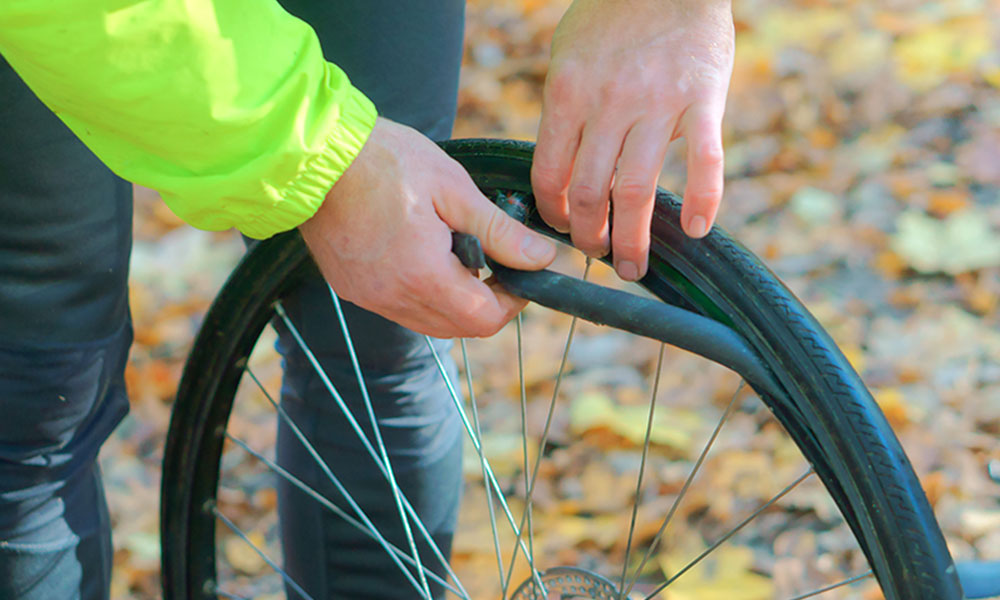
Bike lights
In winter, when riding on the road we always have lights on as it can get very gloomy on overcast winter days when the sun is at its weakest.
Small, light and very bright rechargeable LED lights can be cheaply purchased and are perfect to be seen with. Make sure that your lights are charged before every ride. Remember the cold will zap the battery!
Bike tyres
Wider tyres are great for winter riding, on and off road. Opt for tyres that offer a degree of puncture protection and are harder wearing. Continental Gatorskins are excellent for winter riding on roads, but many other tyre manufacturers offer similar models.

Top tip
Keep your chain oiled regularly, and make sure that your cables are in good shape.
Bike mudguards and maintenance
Use mudguards – your backside and the rider behind will thank you for it.
Salty water off gritted roads or mud can cause lots of problems with moving parts, and water getting into exposed cables can cause upset gears. Give your bike a regular look over and try and wash off the accumulated grime regularly. Check for wear on rims and brake blocks, as wet weather can be particularly harsh on these areas. If you can, wash your bike down after every muddy ride.
Before you set off on your winter cycle
Check the weather before you leave and be prepared for the worst. If heading up high, we use the Mountain Weather Information Service. Remember as soon as you climb the weather can change dramatically so if you’re thinking of tackling any major hills, do come prepared.
Make sure you plan a sensible route to match the predicted weather forecast. If you are going alone tell somewhere you are going and expected return time.
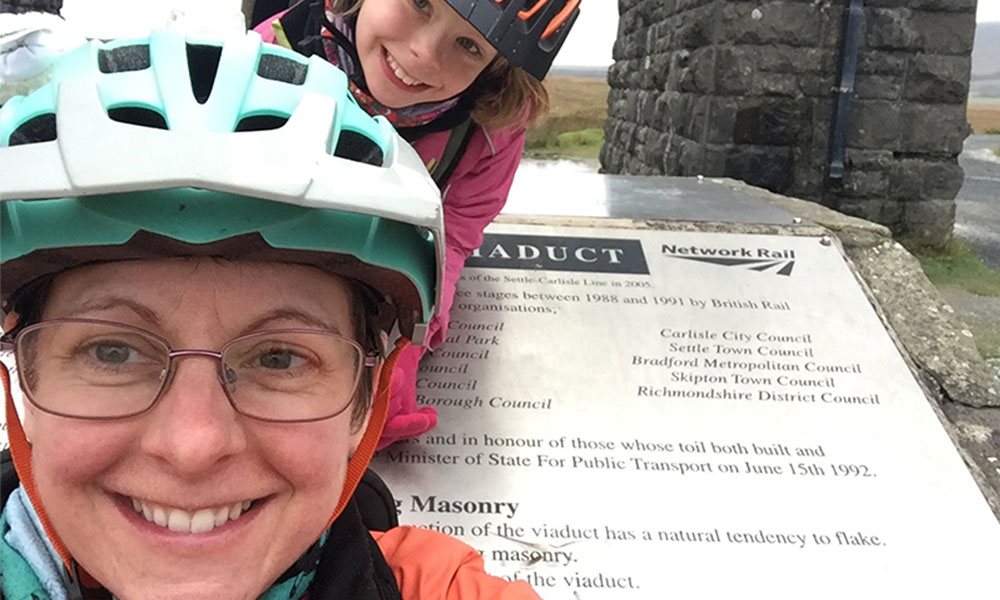
Helen & daughter Daisy on a ride
Suggested winter cycling kit
- Spare clothes/extra layers including gloves and a waterproof jacket. Read our ultimate guide to layering
- Charged phone in waterproof case, loaded with OS Maps for essential navigation
- Paper OS Map of the area
- Battery pack (excellent in cold weather for recharging phones and lights on the move)
- Snack (essential for motivation, especially for kids)
- Water
- Helmet. Read our guide to choosing the right helmet
- Bike tools and puncture repair kit. A spare inner tube is a good idea on longer rides
- Money (for café/pub stop)
It is very easy to become inactive over winter and opt for four wheels instead of two, but getting outside for exercise and enjoyment is just as essential as in summer. It will combat bored kids’ syndrome, boost everyone’s immune system and mood, helping to fight off winter bugs. Feeling the wind in your hair on a crisp, clear winter’s day as you cruise along on two wheels is bliss! Go on, try it!

